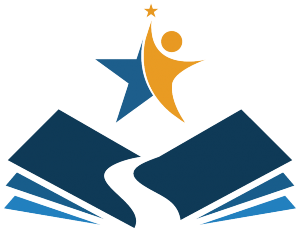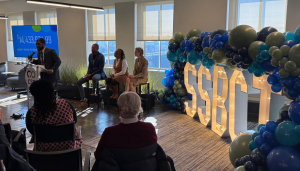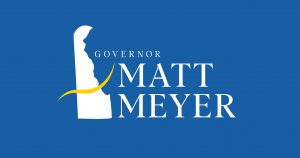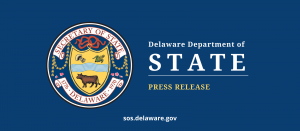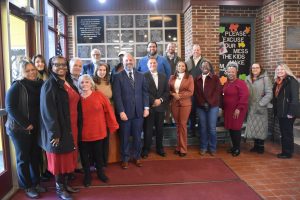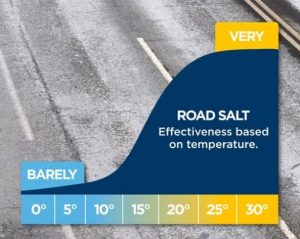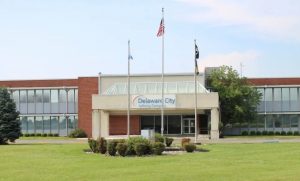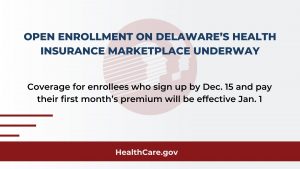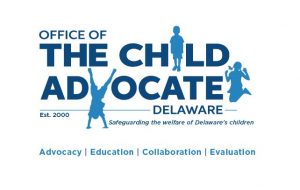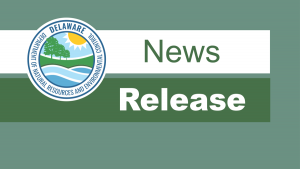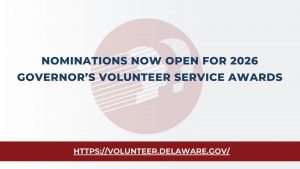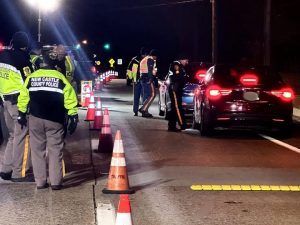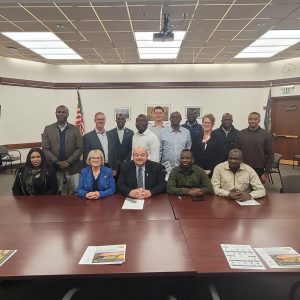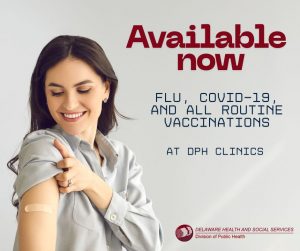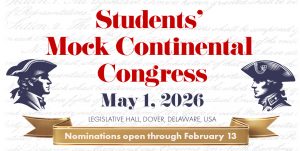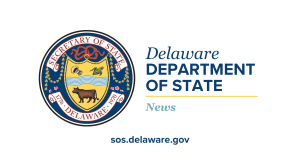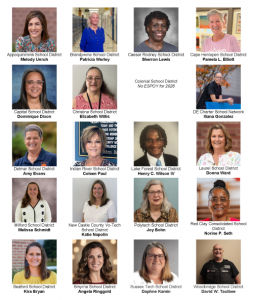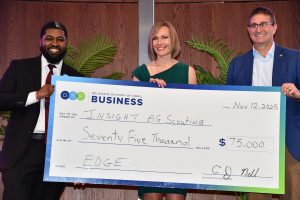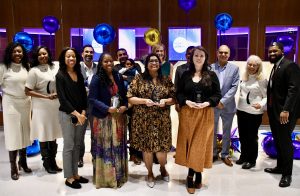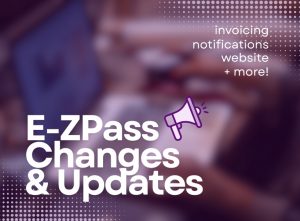Adding statistical clarification:
- 18% of Delaware college-ready students don’t apply to college
- 27% of Delaware college-ready low-income students don’t apply to college
(Wilmington, DE) – The Governor committed to expanding four college access initiatives statewide in remarks given at a White House Summit today, as he talked about Delaware’s effort to improve college opportunities for young people. Delaware is the first state to reach out to all college-ready students with information and application fee waivers for low-income students in partnership with the College Board. The effort is part of Delaware’s overall “Getting to Zero” initiative.
(watch Governor’s remarks)
Governor Markell was the only Governor joining today’s Summit other college and other university presidents and leaders from nonprofits, foundations, state governments and the private sector around the country who joined President Obama and the First Lady. The University of Delaware was among the schools making commitments to improve to college access. Text of the Governor’s remarks follows as well as the White House Fact Sheet on the event.
TEXT of the Governor’s Remarks –White House College Opportunity Summit
Good morning everybody. It’s a pleasure to be here. I want to congratulate Gene and the team for putting this together. I’m tempted to discard my prepared remarks because I thought the first panel was so outstanding and I would love to engage with them some more. I want to thank them and I want to thank Mr. Saulsberg for his announcement. Very excited and we would love to work with you in Delaware on that announcement. I really appreciate the attention of the First Lady and the President to this initiative and all the energy that they’re putting into it. It’s great to be with all you leaders from across the country who are here not just to talk about a problem that we all know exists, but also to actually make concrete and measurable commitments toward increasing the number of young people from disadvantaged backgrounds who successfully pursue higher education.
The statistics, as you know, are alarming. We did a recent study in our state, the state of Delaware, and we found that even among college-ready low-income students, 18 percent of them do not apply anywhere. And these are people – I think David Coleman did a great job describing how well we know these students can, in fact, be successful. Of students that we would thrive – 18 percent don’t apply anywhere. And often times it’s because they think they can’t afford it or they just don’t have anyone telling them that they can make it happen– that it’s possible for them to go.
The commitments that you are making today are outstanding, they’re necessary and I really do believe that they prove that this initiative is not about rhetoric. This initiative is really about getting something done, which is what it’s all about. These commitments set a standard for ambitious, but realistic expectations that should inspire everybody who is in a position to address what is really a serious competitive threat to our country. I know that your commitments inspire me.
When students do not achieve an education that matches their potential, they obviously lose out on tremendous career opportunities – and we, as a society, lose out – on what is an unbelievable opportunity we all have to unleash the potential of so many young people.
I believe that state and local governments have a great opportunity and responsibility – I know the mayor of San Antonio will be up here in a few minutes – but I think it’s important to have mayors and governors join you in rising to this challenge and I’m here on behalf of governors to offer a path forward. Clearly, the specifics may differ from one state to the next, but we all have the opportunity to do something meaningful on this issue. And when 60 percent of our jobs will require education beyond high school by the end of the decade, we can’t wait to act. We’re not even close to those numbers today.
In Delaware, we call our initiative “Getting to Zero.” The goal is to have zero college ready students who do not complete the application process and who don’t apply to schools that best suit their needs and talents. In other words, as I mentioned a moment ago, 18 percent of our low-income students who could succeed in college don’t apply. That’s about 1,000 students from all income levels in Delaware who are college ready but don’t attend. We want to get that 1,000 students down to zero. We want to make sure that if you can be successful in college, even if you come from a low-income family, you’re applying. David’s been very clear you ought to apply to at least four schools as well.
In the fall, we launched a partnership with the College Board to send college-ready low-income seniors information on college affordability and financial aid, materials to help them choose colleges, and application-fee waivers, which he also mentioned have been available for a long time but have been complicated to get.
Our highest-achieving low-income students received a letter signed by all of the Ivy League schools, Stanford, and MIT, congratulating them on their achievements and letting them know that many students attend those institutions at no cost. I know that the president of Yale is here today and I think some of the others as well. But I think the president of Yale was very helpful in helping us get this initiative going.
In Delaware, we could effectively identify who the students are that need support because we’ve invested in an excellent world-class data system. We also provide free school-day, not on a Saturday, but school-day PSAT and SAT testing for every high school student in our state. It gives us fabulous data and I think it’s something that other states should consider. I thank David for all of his help in making this happen.
We’re proud to be the first to try that on a statewide level. But this initial outreach that we’ve done isn’t enough. Students who have the ability to succeed in college unfortunately fall off the path at every step of the way. They need our support and we need them to pursue this opportunity.
Like in many states, individual schools and districts in Delaware are implementing some terrific supports for their students. As our commitment to this event, today I’m announcing four initiatives that we will expand statewide to improve college access for our students.
First, every high school in the state will make time for students to fill out their applications in computer labs, and write college essays during English classes. That’s number one.
Number two, we already have a pilot program we’ve operated in a few of our districts that assists families with filling out the FAFSA form, individual school aid forms and scholarship applications. We’re going to expand this program. We’ve only been able to do this because of a tremendous partnership with volunteers from employers and college students throughout our state. It’s been very, very helpful.
Third, when our students get into school, they should be recognized – to make them feel good but also to set an example for younger students. Like college football has national signing day, all of our schools should have Acceptance Day during which students celebrate their college decision and we get to celebrate with them.
Finally, even after they’re admitted, many of our most vulnerable youth still don’t make it to campus for the first day of school. We’re going to follow up throughout the summer with emails, post cards, and phone calls to make sure all of our at risk students stay on track.
We’re a small state and we clearly have some advantages in carrying out a plan like this, but our goals are absolutely attainable everywhere.
Larger states can partner with counties, school districts and cities which can shoulder much of the responsibility for executing on the plan. I know many of my fellow governors share the urgency that exists in this room and I ask them to join me in this effort.
We do have – and you all know because you guys represent it – we have the greatest system of higher education system in the world and I believe that by working together we will make those institutions – your institutions – accessible for as many of our people as possible. I look forward to seeing the progress that comes out of this and I look forward to working with all of you and, Gene, I attend a lot of conferences like this and I think this is maybe, this is with the first panel and everything else I’ve heard, make this one of the most concrete set of commitments and I’d like to congratulate you and certainly appreciate the support of the President. Thank you all very much.
THE WHITE HOUSE
Office of the Press Secretary
Thursday, January 16, 2014
FACT SHEET: The President and First Lady’s Call to Action on College Opportunity
The President believes he has a job to do, and every day he is fighting to create more opportunities for working and middle class Americans. And while he will continue to work with Democrats and Republicans in Congress to move our country forward, the President is committed to partnering with colleges and universities, business leaders, nonprofits and others to do everything he can to support more college opportunities for students across the country.
Today, in response to the President’s call to action, the President and First Lady are joining with leaders in higher education to announce over 100 new commitments to expand college opportunity. To help more students afford and graduate from college with the skills they need, the Administration has already taken action including doubling Federal investments in Pell Grants and college tax credits and reforming student loans. Last August, the President laid out an ambitious new agenda aimed at improving college value, removing barriers to innovation and competition, and ensuring that student debt remains affordable. As the Administration continues to push for changes that keep college affordable for all students and families, we can and must do more to get more low-income students prepared for college, enrolled in quality institutions, and graduating if we are to achieve our North Star goal of leading the world in the share of college graduates by 2020. Together, the President, the First Lady and these leaders in higher education are taking another step to help ensure that every child, rich or poor, has the opportunity for a quality college education so they can get ahead.
Over 100 New Commitments to Expand College Opportunity: The participants in today’s event were asked not simply to attend an event – but to commit to new action in one of the following areas crucial to college opportunity:
- Connecting more low-income students to the college that is right for them and ensuring more graduate
- Increasing the pool of students preparing for college through early interventions
- Leveling the playing field in college advising and SAT/ACT test preparation
- Strengthening remediation to help academically underprepared students progress through and complete college
Today, over 100 colleges and universities and 40 organizations are announcing new commitments to action to build on their existing efforts in this area. Together, these actions will serve hundreds of thousands of students across the country.
Improving College Opportunity Is Important to Increasing Economic Mobility and Growing the Economy: Without college, a child born in the bottom quintile has only a 5 percent chance of making it to the top quintile. However, the chance of making it to the top nearly quadruples with a college degree – with a nearly equal chance of making it to the top quintile as staying in the bottom quintile. Yet only 9 percent of those born in the bottom quartile attain a bachelor’s degree by age 25, compared to 54 percent in the top quartile. Improving college success is one of the most powerful tools to increase economic mobility and reduce inequality.
Taking Further Action to Expand College Opportunity: This event is not the culmination of these efforts, but rather the launch of a mobilization by the White House and the Department of Education, which will help share and develop additional evidence on what works and foster new commitments to action from a broader range of colleges and universities, business, nonprofits and other leaders. In 2014, the White House and the Department of Education will work with outside groups to engage in further gatherings, catalyze new and additional commitments, develop a follow-up report on progress and hold a White House convening over the next year.
The President and First Lady’s Call to Action on College Opportunity
As part of the President and First Lady’s national call to action on college opportunity, over 100 college presidents and 40 non-profits, foundations and other organizations are announcing new commitments in the following key areas:
- Connecting more low-income students to the school that is right for them and ensuring more students graduate. Many low-income students do not apply to or attend schools where they are most likely to succeed, often because they are not fully aware of their options available to them. Building on models that have had success in better matching low-income students to colleges where their outcomes will be best, participants have committed to doing more to enroll low-income students and ensure they matriculate and graduate. Over 80 colleges and universities and 15 organizations are making commitments in this area, with selected examples including:
A Doubling of STEM Posse Partner Institutions: The Posse Foundation is announcing a doubling to 10 of its STEM Posse Partner Institutions – serving, over the next five years, 250 additional students from diverse, urban backgrounds who might otherwise be overlooked, providing a total of $35 million in full-tuition, four-year scholarships, and helping students to complete science, technology engineering and mathematics (STEM) degrees at some of the nation’s top colleges and universities.
College Board Joining With Member Institutions to Offer Four Free Fee Waivers to Eligible Students for College Applications: The College Board is joining with its member institutions to announce that every income-eligible student who takes the SAT will receive four free fee waivers to apply to college for free.
More than $95 Million in Commitments to Help More Students Complete STEM Degrees: Investments totaling $95 million are being announced today from the Howard Hughes Medical Institute ($65 million over five years) and the Leona M. and Harry B. Helmsley Charitable Trust ($30 million over three years) and to help more students complete STEM degrees.
Action By More than 80 Colleges and Universities: Over 80 colleges and universities are – in addition to their efforts in other categories – taking actions like engaging in new efforts to recruit students who might not otherwise attend their university, expanding need-based aid for low-income students, setting new goals for increasing the share of low-income students, committing to additional community college transfers and taking new steps to improve outcomes for low-income students once they arrive on campus.
- Increasing the Pool of Students Preparing for College Through Early Interventions: Low-income students are less likely to prepare to apply for college by taking recommend courses, visiting college campuses, and taking the SAT or ACT. Building on models that have had success in getting more students to prepare for college through early interventions, participants have committed to working with elementary, middle, and high schools to encourage college-going and assist with preparation. More than 30 colleges and 12 organizations have made commitments in this area, with selected examples including:
A New $5 Million Effort to Design Pathways to Success for Careers: Deloitte, Darden, Walmart, AT&T, Mutual of America, and the Samberg Family Foundation are committing $5 million over four years to support College Summit, and in particular a partnership called ScholarJob that will help low-income students across America connect getting an education with getting a great career. This year, with an investment from the Bezos Family Foundation, ScholarJob volunteers will partner with College Summit student Peer Leaders to scale the program, equipping more than 100,000 high school students from low-income communities in 10 cities with cutting-edge technology to help them explore careers, and to attend and complete college.
$4.5 Million in New Commitments to Redesigned Schools: The Irvine Foundation and Pacific Gas & Electric are making a combined $4.5 million commitment to support the President’s initiative to redesign high schools to include more real-world learning and business partnerships.
Matching Tens of Thousands of Students With Mentors and Rigorous College-Preparation: iMentor is matching 20,000 new first-generation college students with mentors and Blue Engine is expanding academic preparation in college gateway skills to 10,000 additional students over the next five years
$12.5 Million in New Funding to Support Excellent STEM Teaching: 100kin10, a network formed in response to the President’s call to action to prepare 100,000 excellent STEM teachers over a decade, is announcing an additional $12.5 million in funding with support from JP Morgan Chase, the Overdeck Family Foundation, the Hewlett Foundation and the New York State Attorney General.
Efforts by More than 35 Colleges and Universities to Prepare More Students for College: More than 35 colleges and universities are – along with efforts in other categories – taking actions like hosting summer enrichment programs for low-income students; partnering with local high schools to create programs that span high school and link students to college; and encouraging current students or faculty to tutor and interact with low-income high school students
- Leveling the Playing Field in College Advising and Test Preparation. Low-income students are often at a triple disadvantage when it comes to advising and mentorship: their schools have fewer counselors, they can’t afford extra advising or test prep, and often cannot turn to their parents or peers for college insight. Building on models that have had success in boosting low-income college enrollment, participants have committed to increasing access to mentors and advisors. More than 20 colleges and 16 organizations have made commitments in this area, with selected examples including:
Serving An Additional 80,000 Students Through the National College Advising Corps: The National College Advising Corps is announcing new commitments from partner universities that will provide more than 80,000 students over three years with college counseling that has shown effectiveness in increasing college enrollment.
Offering Additional Resources to School Counselors: The National Association for College Admission Counseling will offer free resources and additional training to school counselors to help guide students and their families on the path to college.
New Effort by Khan Academy to Provide College Advising Support: Khan Academy is developing a new college advising and counseling section, along with new college-prep features that focus students on the specific content they need to be prepared for college math placement tests.
Providing Thousands of Additional Students With College Prep Support: Organizations including College Possible, College Spring, College Track, OneGoal, Leadership Enterprise for a Diverse America (LEDA) as well as a coalition of groups under the National College Access Network are making commitments to serve thousands of additional students, providing counseling services, high-quality SAT/ACT prep, and other support for students applying to college
New Commitments by More than 20 Colleges To Offer Advice to Students Navigating College Application: More than 20 colleges and universities are – along with efforts in other categories – taking actions to expand summer college preparation programs for low-income students; creating new relationships with high schools to provide advising about college and financial aid; and expanding opportunities for current college students to work in high schools and middle schools to help advise students on college options
- Seeking Breakthroughs in Remedial Education. While increasing college access is critical, we must ensure that low-income students are successful once they get there. Far too many students enter college underprepared to succeed, and remediation needs at four-year institutions are greatest for low-income students. Only one in four students in remedial classes will eventually earn a degree from a community college. An additional 14 percent will transfer to a four-year college without a certificate or degree. But new models are emerging that have the promise of dramatically improving college outcomes for students in need of remediation. Participants have committed to significantly improving outcomes for academically underprepared students to ensure they succeed in college by strengthening instruction, using technology, better supporting students in remediation, and reducing the need for remediation. More than 20 colleges and universities, 23 states and 10 organizations have made commitments in this area, including:
A New Commitment by 23 States to a Comprehensive Approach to Address Remediation: 23 states supported by Complete College America, have committed to comprehensive approaches to addressing remediation that will help them achieve a significant increase in the number of college students assigned to remediation completing college level math and English their first year, recognizing that most of these students will need additional academic support. Completion of these gateway courses will lead to many more students completing their degrees.
Providing Colleges With Tools And Resources to Serve Academically Underprepared Students: Key organizations are teaming up to ensure that colleges interested in improving their remediation activities have tools and resources they need to successfully serve students who are academically underprepared. Achieving the Dream, Carnegie Foundation for the Advancement of Teaching, and Jobs for the Future—experts in institutional change, faculty engagement and curriculum reform, and policy development, respectively, are working to create a “Breakthrough Collaborative.” The collaborative will work with willing community colleges, higher education organizations, philanthropy and other stakeholders to help learn together the best ways to implement and improve promising practices that accelerate progression through remediation and gateway courses, especially for those students who are the least college-ready.
In addition to these steps, the Department of Education is taking the following actions to help support low-income students. This builds on announcements by the Department of Education at the Higher Education “Datapalooza” earlier in the week.
Leveraging Work-Study Jobs to Support Near-Peer Mentoring: To build on promising evidence around the effectiveness of near-peer students as college advisers, the Department of Education will develop and announce in the coming weeks a new effort that would encourage and support institutions to place students into college counseling and mentoring work-study jobs through the Federal Work-Study program. This effort would assist institutions to establish, in partnership with school districts, work-study jobs that will help expand access and strengthen secondary-to-postsecondary transitions by raising awareness about college and financial aid among high school students, as well as provide on-campus work-study mentoring jobs that will help increase postsecondary persistence and completion.
Building the Evidence Base for Early Intervention through GEAR UP: The Department of Education will partner with the National Council for Community and Education Partnerships (NCCEP) to support NCCEP’s efforts to develop and evaluate best practices from GEAR UP programs related to college fit and college readiness. In addition, the Department will announce that the approximately $62 million GEAR UP grant competition scheduled for next year will focus on building and promoting the use of successful practices aimed at improving college fit, college readiness, and helping ensure students achieve the necessary milestones that provide a pathway to college success.
Testing the Best Approaches to College Advising and Matching Through Upward Bound: During 2014-15, the Department of Education will commit to developing and testing a new professional development program for Upward Bound staff that includes tools and resources building on lessons and strategies learned in the field to support college matching and in-person college advising. The tool kit and training are being developed in collaboration with the College Board, ACT, and the Council for Opportunity in Education, and will be designed for use with both Upward Bound staff and high school counselors.
Using FAFSA Completion Information to Support College Going: The Department of Education commits to providing a process for sharing data on Free Application for Federal Student Aid (FAFSA) completion with states, so states and school districts can better identify which students have completed their forms and target efforts to increase completion. This initiative would allow the scaling up of successful initiatives that the Department has launched around FAFSA completion in cities like Chicago, San Antonio and Detroit, which raised FAFSA completion rates by more than 30 percent in some cases. This will be implemented formally through agreements between the Department of Education and state student aid agencies in early 2014, which coincides with the beginning of the FAFSA application cycle for academic year 2014-15.


